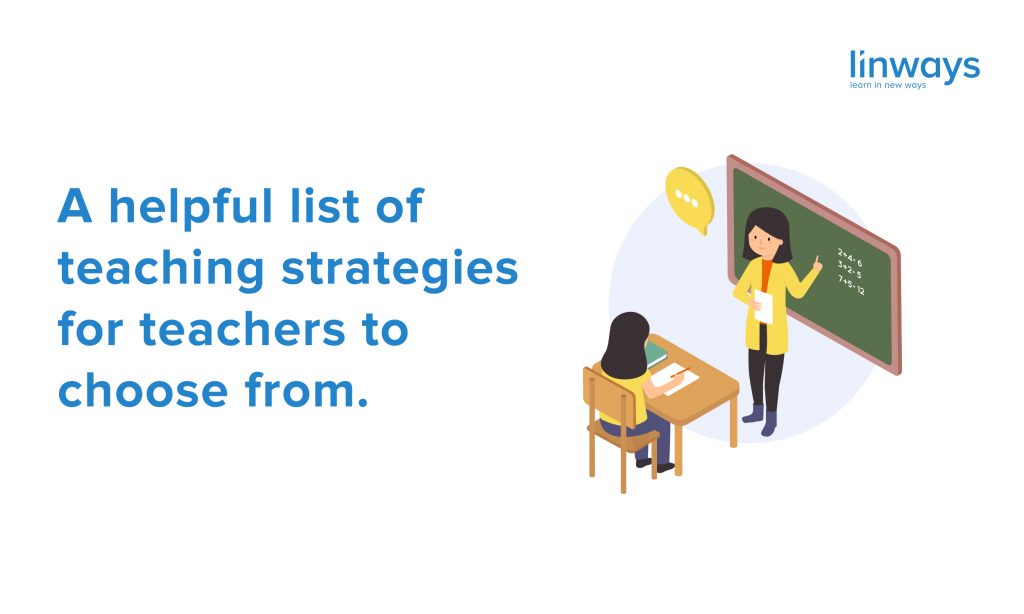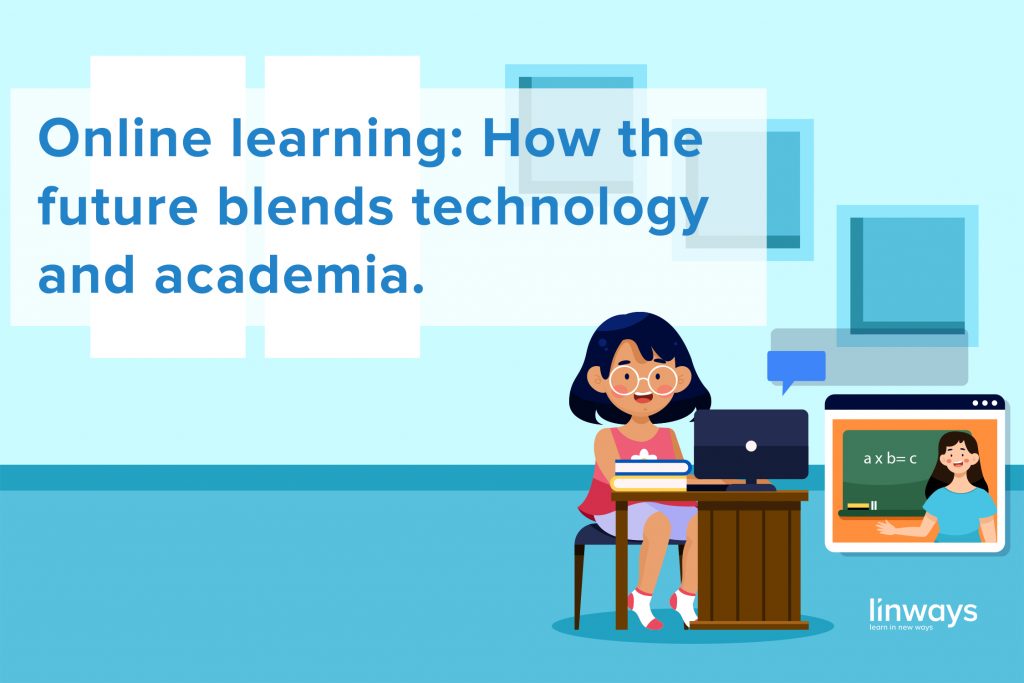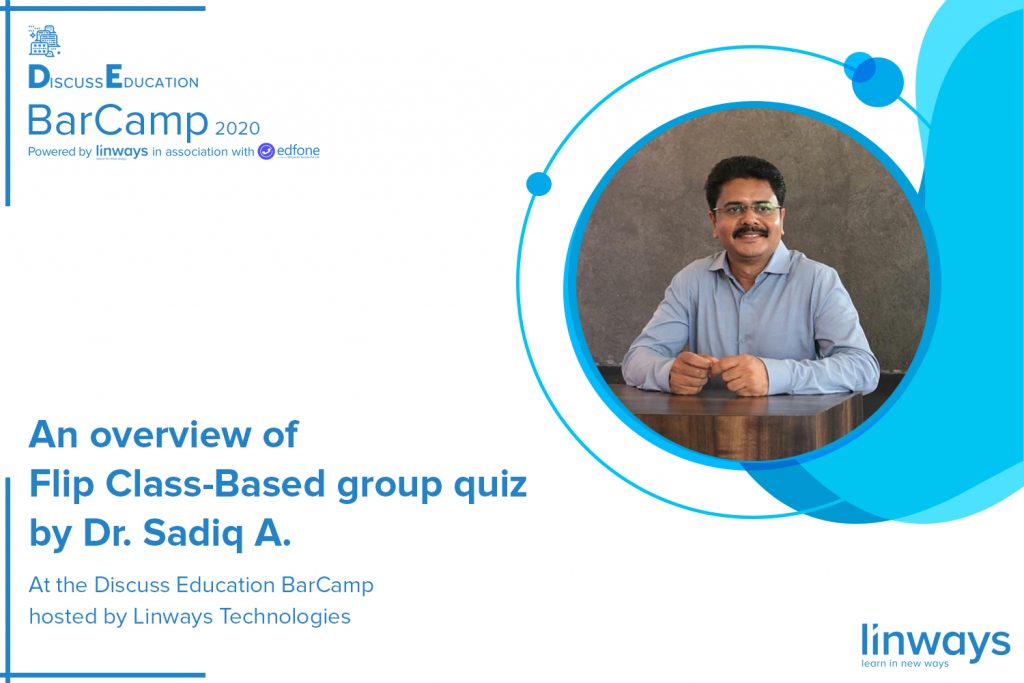
Hi, as we have stated before countless times, Linways is here to improve the way the world is learning with the help of technology. So we have always taken great care and put in a lot of effort into developing this blog as a really helpful resource for teachers and educational institutions to find tricks, strategies, theories, practices, and concepts about teaching-learning and education management.
Over the years, we have discussed several teaching strategies in this blog. Here’s a compact list of some of them which you can use to easily find the right pick, or learn about them deeply.
Project-Based Learning
Project-based learning is a teaching method in which the students learn by actively engaging in real-world and personally meaningful projects. In Project Based Learning, teachers make learning come alive for students.
It’s an inquiry-based approach where the students are introduced to a problem or a project which they need to solve. In their journey towards answers, the students come in contact with the core subject matter, underlying principles, and other relevant information that they are expected to acquire at the end of the course.
So essentially, the PBL model replaces or supplements the traditional lecture by actively engaging students in course-related activities.
In PBL, problems are used as the stimulus and focus for student activity. PBL courses start with the problems rather than with exposition of knowledge. Students acquire knowledge and skills through a staged sequence of problems presented in context.
Flipped classroom
Instead of lecturing for long hours and merely delivering the information, the course content is delivered online and the classroom is used for diving deeper into the curriculum facilitating the knowledge they have using experiments, projects, and peer-to-peer interactions.
This works best online. Teachers can deliver the course content through learning management systems and join with the students through live calls or discussion forums to engage them in the topic. This is a self-driven approach where the student learns about the topic themselves.
The Kirkpatrick model.
The Kirkpatrick model was developed by Donald Kirkpatrick in 1955. It is probably the best-known model for analyzing and evaluating the results of training and educational programs. The model is composed of four levels. Kirkpatrick’s four levels are designed as a sequence of ways to evaluate training programs.
Here are those four levels of evaluation in the Kirkpatrick model
Level 1: Reaction
The first level of evaluation pertains to the degree to which participants find the training favorable, engaging, and relevant. It gives you valuable information on if your coaching style is engaging and would be necessary to retain the learner’s attention. This level basically helps you make sure that what you teach reaches the students at all times.
Level 2: Learning
The second level of the Kirkpatrick model of evaluation is about the degree to which students acquire the intended knowledge and skills. This is what we usually evaluate during exams or tests in the classroom. It gives you an idea of how much the student has learned from your class and which areas you need to focus on or revisit in order to help your students learn better.
Level 3: Behavior
The third level of evaluation relates directly to how much the students can apply in practice or in context from what they learned during class. As the Kirkpatrick model is very commonly used in job training environments, this is where they evaluate if the training knowledge is transferred so the student can apply to their jobs. In education scenarios, the evaluation can be done as practical sessions in labs, assignments, special projects to find solutions for real-world problems, etc. which can be translated to course credits or added assessment tactics.
Level 4: Results
Finally, the fourth level of the Kirkpatrick model is where you evaluate the results of institutional assessments and put other assessment results into the context to see if your students have truly achieved the learning outcomes. This is where you shall measure the effectiveness of your teaching on the achievement of those learning outcomes.
The Sync Teaching Model.
In the sync teaching model, the core revolves around the idea that students accessing (or creating) personalized content while the teacher guides and facilitates the core of the lesson.
While in practice, the sync model only dictates that the students “sync” with the teacher’s path. As a teacher, you will have the added advantage of implementing personalized learning in classes and differentiating the student groups to create a better learning experience
Another advantage of the sync model is the natural blend of technology. There’s no need to create new workflows or a unique software platform. You can simply continue what you are doing right now and simply transition to the sync model bit by bit using your own learning management system and communication apps. Students will also have the freedom to explore horizontally with the content and learn if they are interested. You can host discussion forums, share links to external documents, etc. to nurture this learning culture in your students.
Adaptive learning
Adaptive learning or adaptive teaching is essentially a teaching mechanism. The teacher uses technology-assisted insights and analytics to improvise and update their teaching styles as the curriculum moves forward. This way, the teacher can learn about student’s learning efficiency, their unique needs, and offer customized course delivery for the best experience.
Adaptive learning is about making learning personal. It enables educators to help their students learn better and achieve learning outcomes through personalization. As both teachers and students usually use some kind of learning management software for adaptive learning, the teachers can analyze the data and understand each student’s individual needs better than ever.
We will come up with more great content for teachers and educational institutions to make their educational experience better and improve teaching quality. Subscribe to our blog to receive our latest updates in your inbox.
Also published on Medium.




